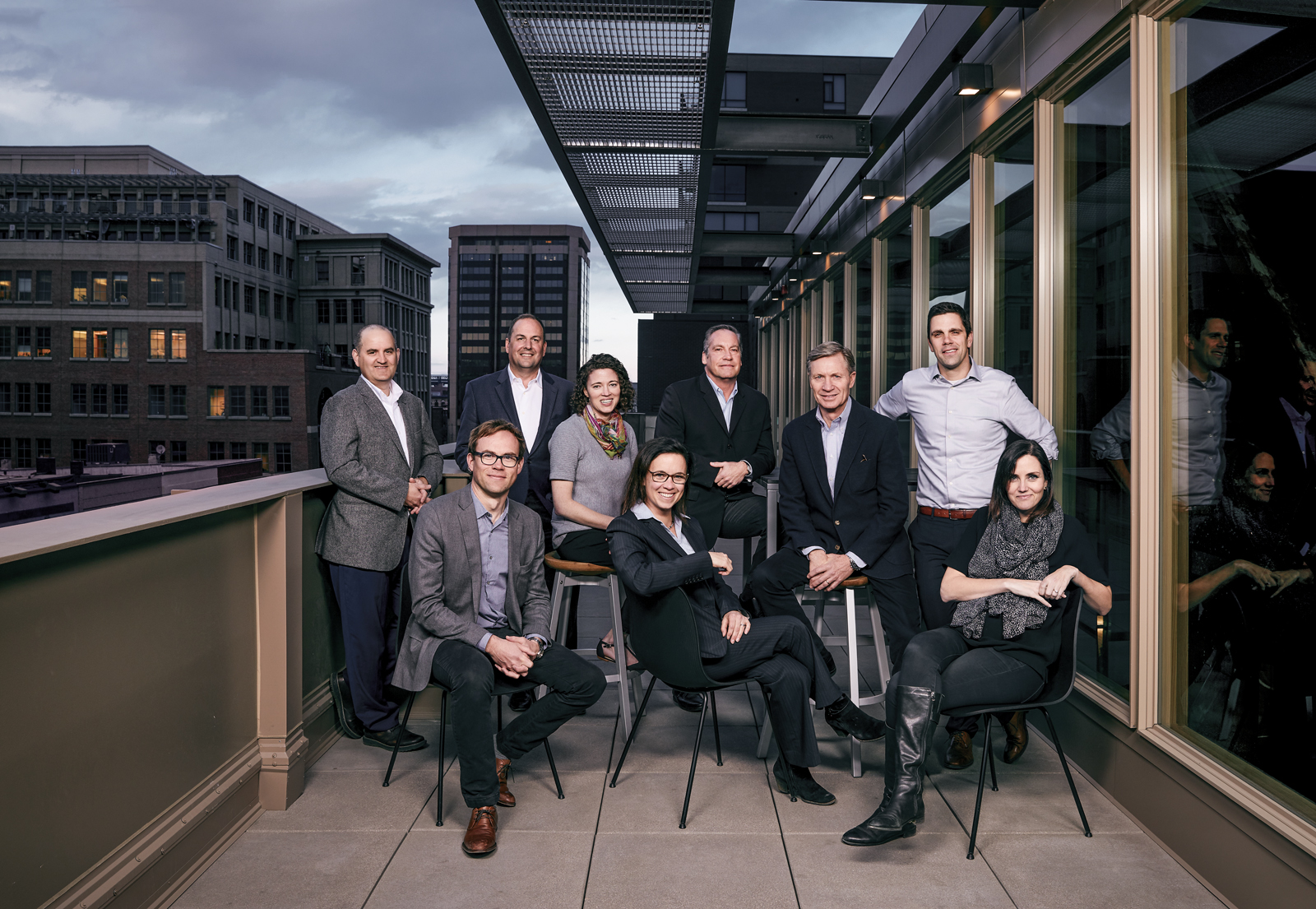The Local newsletter is your free, daily guide to life in Colorado. For locals, by locals.
When arguably the biggest tech name on the planet calls and asks for a design for its new digs, most firms would consider it a major coup. For Denver’s Tryba Architects? Business as usual.
Since 1988, the civic architecture firm has created and renovated some of Denver’s most high-profile urban spaces. From the overhaul of the historic Daniels & Fisher Tower downtown to the redevelopment of the Denver Botanic Gardens to the new Boulder Google campus, the firm’s portfolio is diverse. But all the projects share some fundamental concepts—including continuity between past and present.

That cohesion is an important part of Tryba’s design philosophy, which was pioneered by founding principal David Tryba when he returned to Colorado after spending much of the eighties with a New York City firm that specialized in building-restoration and adaptive reuse. In the 1970s and early ’80s, Denver was engaged in what its leaders considered the best method of urban revitalization: “[Denver] destroyed 25 to 30 city blocks of its historic fabric,” Tryba says. “We were following the lead of many other cities, thinking the best way to revitalize was to get rid of the past and start with a clean slate.”
By the time Tryba launched his firm, Denver had run out of money to continue demolishing, which allowed him to begin assessing the value of downtown’s old warehouses—and figuring out ways to design for modern needs (say, a gourmet grocery store or a new, hip hotel) that would preserve Denver’s DNA. That genetic blueprint includes structures more than 100 years old—including the Hotel Teatro and Union Station—that have lent themselves to ambitious restoration projects that put Tryba on the map. “It’s about adaptive reuse and preservation,” says Tommy Matthews, the firm’s senior associate. “But not preservation for preservation’s sake; preservation for flexibility and future use.”

A fitting example is the new, Tryba-designed GoSpotCheck headquarters at 15th and Market streets in LoDo. The modern, steel-and-glass three-story structure (plus a top-floor mezzanine) connects to the adjacent turn-of-the-century Rocky Mountain Seed Company building—and honors its neighbor’s historic character through careful scale and proportions. “With their elegant addition to the Seed building, Tryba Architects again put their stamp on a vital corner of downtown,” says Brad Buchanan, director of community planning and development for the City and County of Denver. Market and 15th acts as the entry point to LoDo from Auraria Parkway, he says, and “instead of what had been a surface parking lot, we now have a beautiful example of contemporary architecture” mixed with a historic building to bridge the two neighborhoods.
Perhaps the most powerful illustration of this connection between past and present is Tryba Architects’ own headquarters, housed in the historic William G. Fisher House in Capitol Hill (which is also the Trybas’ personal residence). After David Tryba and his wife bought the neglected house in 1997, it took two years to restore it to its former splendor. But instead of keeping the home’s original ballroom—a space with little modern-day use—they transformed it into the architects’ studio by adding contemporary floor-to-ceiling windows that maximize views of a manicured courtyard. The project not only kept the mansion’s character intact, but also adapted an impractical feature into a functional space that creates more connection between outside and in.
The interplay between indoors and outdoors is another hallmark of Tryba Architects’ designs. “Denver is a city connected to wilderness,” Tryba says. “More and more folks are coming to Colorado from all over the world because of the environment. We want to illustrate that outdoor-oriented culture in our design; a connection to nature is something we try to give all of our structures.”

This is especially true of Tryba’s newest projects: In LoHi, the U-shaped headquarters for BP’s Lower 48 business hugs a landscaped courtyard garden perched along the Platte River. And in the Golden Triangle Creative District, the History Colorado Center’s exhibition space surrounds a soaring, light-filled atrium. “It’s about creating a place people want to be versus a place people have to be, whether it’s one person or 300 people,” says Tryba’s managing principal Bill Moon.
Rounding out what the team calls its “love affair with urbanism,” Tryba Architects has branched out from its civic contributions and designed 15 residences (including one for the former chairman of the board of the Denver Botanic Gardens). “Clients have seen projects we’ve done,” says principal John McIntyre, “fallen in love with something, and made the leap that we can do that with a residence.”
It’s a natural fit for a firm devoted to creating—and preserving—a sense of home, whether in a whole city block or a single structure. No doubt Google’s campus is a triumph for Tryba, but we’re betting the firm’s real legacy will be its contribution to helping Denver feel comfortable in—and celebrate—its
own skin.









